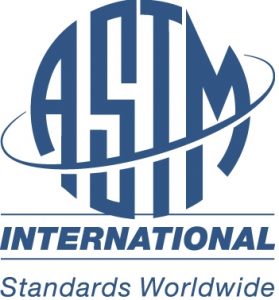
ASTM International https://www.astm.org/
Dear D&D Community,
On July 24, 2017, ASTM International’s E10 Committee on Nuclear Technology and Applications published two new international standard specifications for fixative technologies that aim to immobilize radioactive contamination, minimize worker exposure, and protect uncontaminated areas against the spread of radioactive contamination during the decommissioning of nuclear facilities.
The first specification (E 3104-17, Specification for Strippable & Removable Coatings to Mitigate Spread of Radioactive Contamination) establishes performance specifications for a coating that is intended to be removable during subsequent decontamination operations. The second specification (E 3105-17, Specification for Permanent Coatings Used to Mitigate Spread of Radioactive Contamination) is for coatings that are intended to be permanent, non-removable, long-term material for fixing contamination in place during decommissioning.
The E10 Committee, through the E10.03 Subcommittee on Radiological Protection for Decontamination and Decommissioning of Nuclear Facilities and Components, has moved forward with creating consensus based standards for D&D technologies that are not only aligned with technical specifications, but also account for the safety, regulatory, and operational requirements encountered during D&D activities. The intent is to promulgate relevant, uniform testing protocols that can be leveraged across the nuclear environmental management community, and support decision makers and end users with common references in the selection and employment of those standards and associated technologies.
The E10 Committee and its associated Subcommittees is comprised of approximately 130 international members from government, research laboratories, academia, and the private sector, and employs a collaborative process that bridges organizational boundaries and cultures to achieve consensus on industry standards for uniform testing and evaluation of technologies and processes. As this effort expands, the ASTM International E10.03 Subcommittee will be pursuing further testing protocol and standards development for not only fixatives, but other technology categories associated with D&D as well, and highly encourages other interested members from the international D&D community to join.
Updates on this process will be provided via the D&D Knowledge Management Information Tool (D&D KM-IT), a community-driven website available at https://www.dndkm.org
Joseph Sinicrope
Research Scientist, D&D Technology Development, Testing, and Evaluation in support of DOE Environmental Management Cooperative Agreement
Chairman, ASTM International E10.03 Subcommittee on Radiological Protection for Decontamination and Decommissioning of Nuclear Facilities and Components
Applied Research Center
Florida International University
10555 W. Flagler St.
Miami, FL
305.348.0084 (work)
jsinicro@fiu.edu

